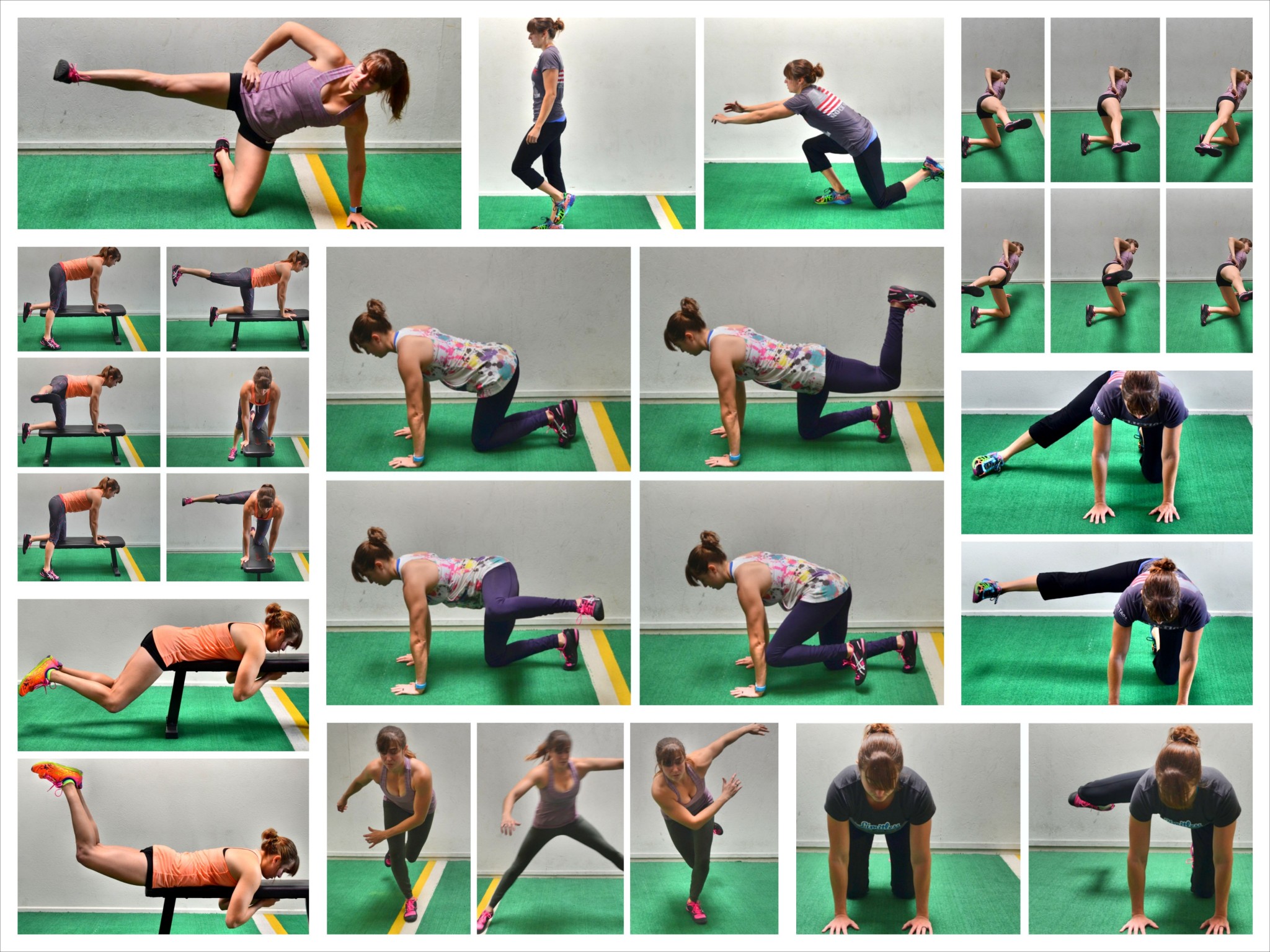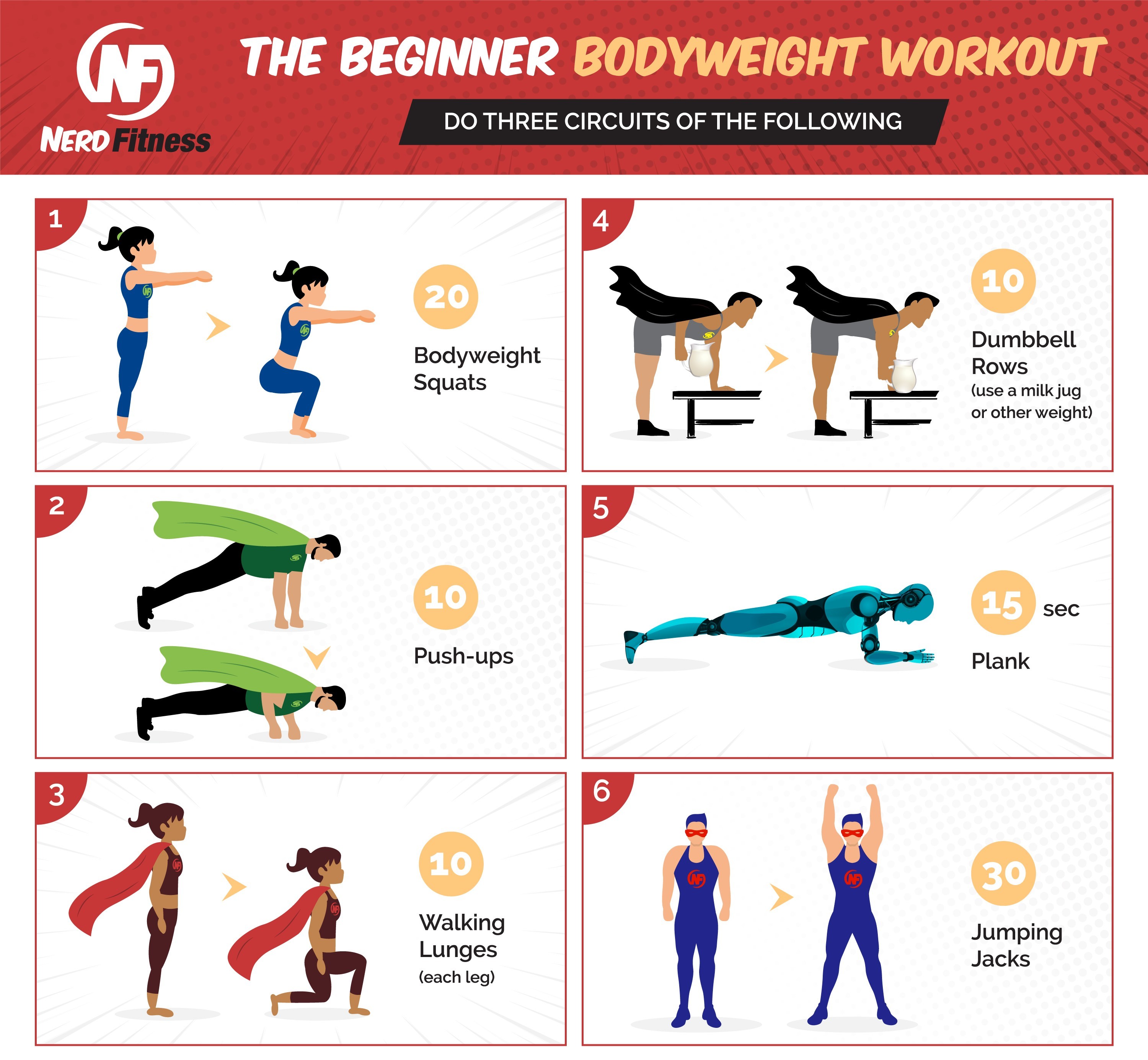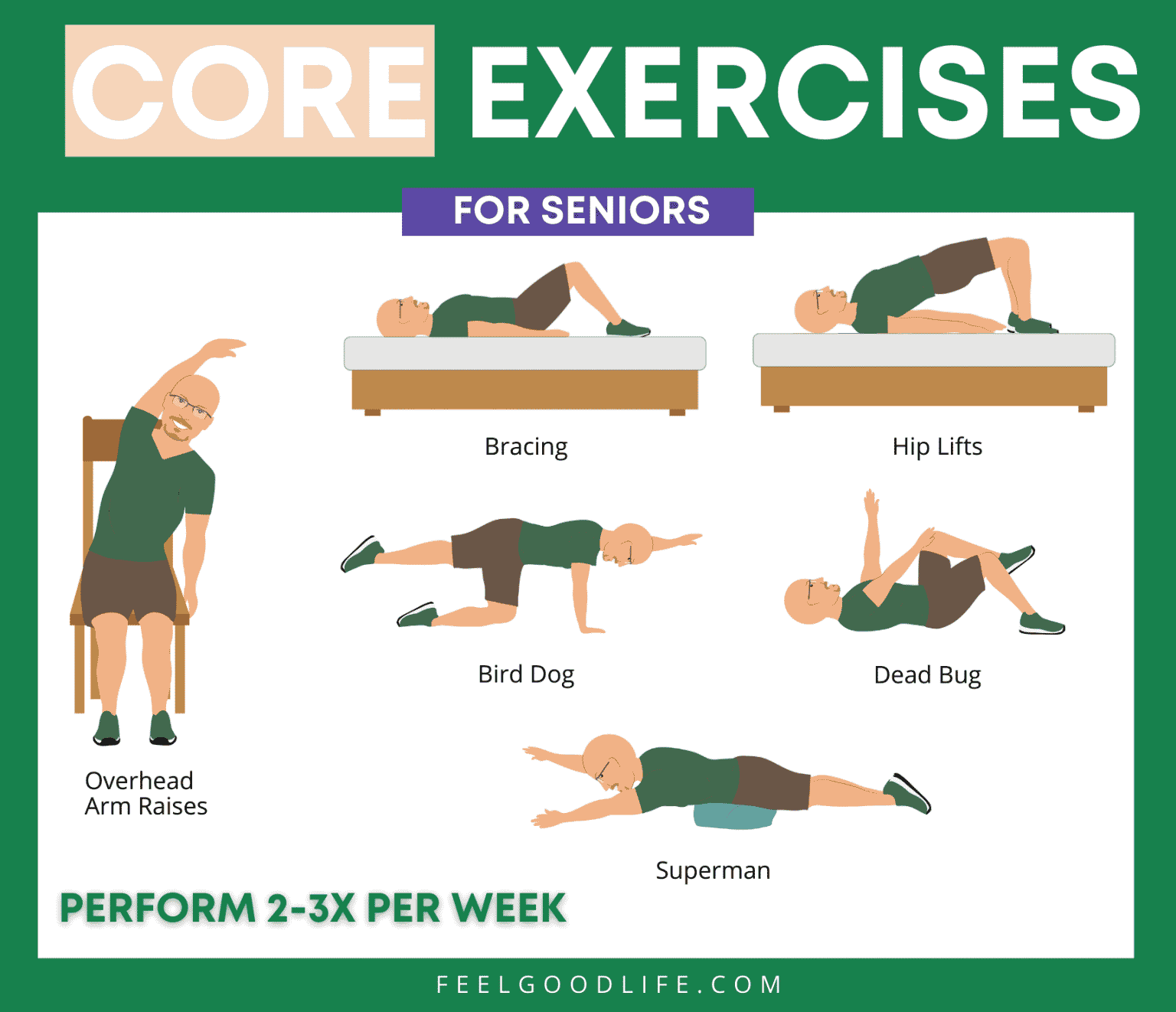Basic exercises for strength – Unleash your strength potential with our comprehensive guide to basic exercises! Dive into the world of bodyweight, compound, resistance band, and dumbbell exercises, unlocking the secrets to building a robust and powerful physique. Prepare to witness a transformation as we explore the techniques, benefits, and progressions that will elevate your strength training journey to new heights.
Bodyweight Exercises
Bodyweight exercises utilize an individual’s own weight as resistance for strength training. They offer numerous benefits, including:
Convenience and Accessibility
Bodyweight exercises can be performed anywhere, without the need for specialized equipment or gym memberships.
Functional Strength
Bodyweight exercises mimic everyday movements, enhancing functional strength that translates to daily activities.
You also can understand valuable knowledge by exploring basic solar panel system.
Joint Health
Find out about how off grid pv system design can deliver the best answers for your issues.
Bodyweight exercises generally have a lower impact on joints compared to weightlifting, making them suitable for individuals with joint issues or injuries.
Versatility
Bodyweight exercises can be modified to suit different fitness levels, making them accessible to beginners and advanced exercisers alike.
Basic Bodyweight Exercises
Here is a table outlining 5 basic bodyweight exercises:| Exercise| Steps| Muscle Groups Targeted||—|—|—|| Push-Ups| Lower and raise your body by bending and extending your arms, keeping your back straight. | Chest, triceps, shoulders || Squats| Lower your body by bending your knees and hips, as if sitting back into a chair.
| Quadriceps, hamstrings, glutes || Lunges| Step forward with one leg and bend both knees, lowering your body until your back knee is close to the ground. | Quadriceps, hamstrings, glutes || Plank| Hold a position with your forearms and toes on the ground, keeping your body in a straight line.
| Core, shoulders, back || Burpees| Start standing, then lower into a squat, place your hands on the ground, jump your feet back into a plank, jump your feet forward, and stand up. | Full-body |
Importance of Proper Form and Progression
Proper form is crucial in bodyweight training to prevent injuries and maximize effectiveness. Focus on maintaining a neutral spine, engaging your core, and controlling your movements. Progression is also important to continually challenge your muscles and promote strength gains. Gradually increase the number of repetitions, sets, or difficulty of exercises as you get stronger.
Compound Exercises
Compound exercises are multi-joint movements that engage multiple muscle groups simultaneously, making them highly efficient for building strength and overall fitness. They offer numerous advantages over isolation exercises, which target a single muscle group.
Here are some key benefits of compound exercises for strength development:
- Greater muscle activation:Compound exercises recruit more muscle fibers, leading to increased muscle growth and strength.
- Improved coordination and stability:These exercises require coordination and balance, enhancing overall athleticism.
- Enhanced functional fitness:Compound exercises mimic real-life movements, improving functional strength and daily activities.
- Time efficiency:By targeting multiple muscle groups, compound exercises maximize workout efficiency and save time.
Basic Compound Exercises
The following table lists 5 basic compound exercises, along with their targeted muscle groups and variations:
| Exercise | Targeted Muscle Groups | Variations |
|---|---|---|
| Squat | Quads, glutes, hamstrings, core | Barbell squat, dumbbell squat, goblet squat |
| Deadlift | Back, glutes, hamstrings, quads | Conventional deadlift, Romanian deadlift, sumo deadlift |
| Bench Press | Chest, triceps, shoulders | Barbell bench press, dumbbell bench press, incline bench press |
| Overhead Press | Shoulders, triceps, upper back | Barbell overhead press, dumbbell overhead press, Arnold press |
| Barbell Row | Back, biceps, shoulders | Barbell row, dumbbell row, cable row |
Resistance Band Exercises
Resistance band exercises provide an effective and versatile method for strength training. Resistance bands are elastic bands that create resistance when stretched, making them suitable for various exercises targeting different muscle groups.
Basic Resistance Band Exercises
Here’s a list of 5 basic resistance band exercises with their muscle groups worked and potential modifications:
- Bicep Curls:Targets biceps. Stand on the band with feet hip-width apart, hold the handles in each hand, and curl them up towards your shoulders.
- Triceps Extensions:Targets triceps. Hold the band overhead with both hands, step back, and extend your arms behind you.
- Shoulder Press:Targets shoulders. Stand on the band with feet shoulder-width apart, hold the handles at shoulder height, and press them overhead.
- Squats:Targets quads, glutes, and hamstrings. Stand on the band with feet hip-width apart, hold the handles in each hand, and squat down as if sitting back.
- Lunges:Targets quads, glutes, and hamstrings. Stand on the band with feet hip-width apart, hold the handles in each hand, and step forward into a lunge.
These exercises can be modified by varying the band resistance, the number of repetitions, and the tempo of the movement.
Versatility and Portability
Resistance band training offers versatility and portability. They can be used for a wide range of exercises, from beginner to advanced levels. Their compact size and lightweight make them easy to carry and use anywhere, making them ideal for home workouts or travel.
Dumbbell Exercises: Basic Exercises For Strength
Dumbbells are a versatile and effective tool for strength training. They allow for a wide range of exercises that target various muscle groups, making them suitable for individuals of all fitness levels. Dumbbells provide resistance, which is essential for building muscle strength and size.
Obtain recommendations related to solar kits for home use that can assist you today.
Basic Dumbbell Exercises
Here’s a table outlining 5 basic dumbbell exercises, their targeted muscle groups, and potential progressions:| Exercise | Targeted Muscle Groups | Progressions ||—|—|—|| Dumbbell Bicep Curl | Biceps | Increase weight, use a preacher curl bench || Dumbbell Bench Press | Chest, Triceps, Shoulders | Increase weight, use an incline or decline bench || Dumbbell Row | Back, Biceps | Increase weight, use a lower grip || Dumbbell Lunge | Legs, Glutes | Increase weight, add a jump or step || Dumbbell Overhead Press | Shoulders, Triceps | Increase weight, use a wider grip |
Benefits of Dumbbell Exercises
Incorporating dumbbell exercises into a strength training routine offers several benefits:
Increased muscle mass
Dumbbells provide resistance that challenges muscles, leading to muscle growth and strength development.
Improved balance and coordination
Dumbbell exercises often involve unilateral movements, which help improve balance and coordination.
Flexibility and range of motion
Dumbbells allow for a greater range of motion compared to barbells, enhancing flexibility and joint mobility.
Convenience and versatility
Dumbbells are portable and can be used at home or in the gym, making them convenient for individuals with busy schedules.
Reduced risk of injury
Browse the implementation of solar power grid prices in real-world situations to understand its applications.
Dumbbells allow for a more controlled movement pattern, reducing the risk of injuries compared to other weightlifting equipment.
Progressive Overload
Progressive overload is a fundamental principle in strength training that involves gradually increasing the stress placed on your muscles over time. This controlled and systematic approach allows your body to adapt and build strength progressively. By continually challenging your muscles with increasing demands, you stimulate muscle growth and enhance overall strength.
Methods for Implementing Progressive Overload
Progressive overload can be achieved through various methods:
- Increasing Weight:Gradually add weight to your exercises over time. This is the most common method and involves using heavier weights as you get stronger.
- Increasing Sets and Reps:Increase the number of sets and repetitions you perform for each exercise. This increases the total volume of work done, challenging your muscles further.
- Increasing Intensity:Make your workouts more challenging by using techniques like supersets, drop sets, or reducing rest periods. These methods increase the intensity of your training, pushing your muscles to work harder.
Importance of Rest and Recovery, Basic exercises for strength
Rest and recovery are crucial for progressive overload training. Adequate rest allows your muscles to repair and rebuild, preparing them for the next bout of training. Insufficient rest can lead to overtraining, injuries, and reduced progress. It’s essential to listen to your body and incorporate rest days into your training schedule.
Closing Summary
In conclusion, the path to strength is paved with a foundation of basic exercises. By incorporating these movements into your training regimen, you’ll ignite muscle growth, enhance functional fitness, and empower yourself with a body that performs at its peak.
Embrace the challenge, master the techniques, and unlock the true potential of your strength!
FAQ Insights
How often should I perform basic strength exercises?
Aim for 2-3 sessions per week, allowing for adequate rest and recovery between workouts.
Is it necessary to use weights for strength training?
While weights can enhance resistance, bodyweight exercises and resistance bands offer effective alternatives, especially for beginners.
How do I know if I’m lifting too much weight?
Listen to your body. If you experience excessive strain, pain, or difficulty maintaining proper form, reduce the weight.



